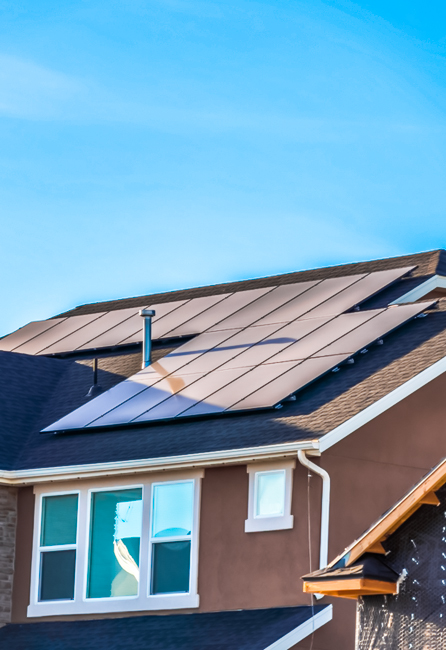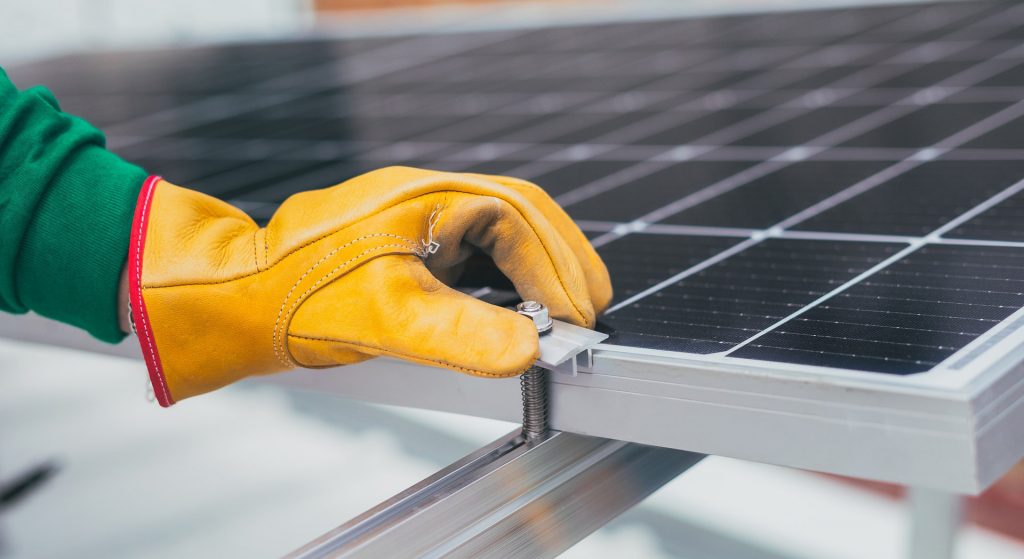As the move towards renewable energy sources continues to gain momentum, understanding one’s home’s energy needs becomes increasingly important. Proper sizing and design of a solar roofing system can be an effective way for homeowners to reduce their reliance on non-renewable power sources.
This article will discuss how proper sizing and design of a solar roofing system are necessary in order to meet a home’s energy demands efficiently and cost-effectively. It will also analyze the different factors that must be considered when designing such systems, as well as provide examples of how this process is being applied successfully across the globe.
Estimating Your Home’S Energy Needs
In order to ensure that the solar roofing system is properly sized and designed for your home, it is essential to accurately estimate its energy needs.
The costs associated with installing a solar roofing system depend on the size of the installation as well as other factors such as efficiency of components and local zoning regulations. Therefore, evaluating these different aspects carefully will help you maximize cost-efficiency and reduce long-term expenses related to energy consumption.
When determining your home’s energy needs, there are several important considerations: climate conditions in your area; insulation levels; type and number of appliances used; quantity and quality of existing lighting fixtures; air conditioning requirements; usage patterns among occupants (e.g., how often they use their electronic devices); amount of electricity generated by renewable sources like wind turbines or solar panels already installed around your property; any additional electrical loads needed for specialized projects or equipment.
Taking all these into account when designing the solar roofing system will enable you to make an informed decision about the size and specifications that best suit your individual needs.
Evaluating Your Roof’s Suitability For Solar Panels

After estimating your home’s energy needs, it is important to evaluate the suitability of your roof for a solar panel system.
Location factors and climate conditions can play an important role in this evaluation since they affect the amount of sunlight that will be available for solar panels to absorb, as well as how much heat the panels will store up during peak sun hours.
Sunlight levels vary from one area to another depending on geographical latitude and longitude, cloud cover, air quality and altitude among other regional variables.
Additionally, temperatures throughout the year also influence how much power a photovoltaic system will generate; higher temperatures tend to reduce its efficiency while colder climates are more suitable for efficient performance.
It is therefore essential to consider such location and climate factors when assessing whether or not a particular site is suitable for installing solar panels.
Determining The Right Solar Panel Size For Your Roof
Accurately sizing and designing a solar roofing system is key to achieving the highest energy efficiency.
When it comes to determining the right size for your home’s solar panels, several factors must be taken into consideration including cost analysis, available space on the roof, local climate conditions, and expected output of electricity from the system.
Ultimately, when calculating how many solar panels you need for an efficient solar installation, you should consider the total amount of power required.
A professional installer will use sophisticated computer software to accurately assess your home’s energy needs and determine how much electricity can realistically be generated by a given number of solar panels using a process known as “cost-benefit analysis.”
This enables homeowners to make informed decisions about their investments in terms of both cost savings and increased energy efficiency over time.
Choosing The Right Inverters And Charge Controllers
In order to make the most informed decision when selecting an appropriate solar panel size for your roof, it is important to also consider which inverters and charge controllers will suit your home’s energy needs.
Reviewing warranties and comparing brands are essential steps in this process as they can provide insight into the quality of the product being purchased.
When choosing a system of inverters and charge controllers, be sure to take into account factors such as cost, efficiency, and noise levels.
Additionally, it is important to look at what type of warranty information is provided by each manufacturer. This includes how long their warranty covers the product for any potential defects or malfunctions that may occur over time.
Comparing different brands side-by-side is also recommended so you can get a better understanding of which one offers the highest quality components at a reasonable price point.
Utilizing Batteries For Optimal Performance

The use of batteries to store energy generated and not used right away can be an effective way to reduce costs associated with a solar roofing system.
Batteries provide the homeowner with enhanced control over their home’s energy needs, allowing them to draw stored energy during peak times when electricity rates are higher or as needed for backup power supply in case of blackouts.
Storing energy from solar panels is essential for reliable access to clean renewable energy throughout the day and night.
Although it requires additional investment upfront, battery storage provides long-term value that helps offset the cost of installation by reducing overall utility bills.
Battery technology continues to improve each year, providing more efficient options for homeowners wanting to maximize their return on investment.
Selecting The Right Installation Method
The selection of the right installation method for your solar roofing system is a critical step in ensuring an efficient and cost-effective setup. There are many factors to consider when assessing costs and evaluating potential contractors, such as labor costs, materials used, warranty coverage, installation techniques, and service contracts. It is important to be aware that different methods may require more or less time depending on the complexity of the job. Additionally, it is essential to understand any related local regulations before committing to an installation method.
It’s vital that you do research into various installers prior to selecting one, since their experience will significantly impact not only the quality of the setup but also its long-term efficiency. You should take special care to ask detailed questions about their qualifications, training history with solar installations, certifications held (including safety), insurance policies held by them or their subcontractors if applicable, customer references from past projects, and warranties offered on the parts they use.
Maintaining Your Solar Roofing System
Once your solar roofing system is installed, it is crucial to maintain its efficiency.
Ensuring the highest performance of your photovoltaic cells and maximizing energy output requires regular maintenance checks that should be scheduled at least once a year.
This includes inspecting all components for wear and tear; verifying connections are secure; cleaning any dust or debris off panels; ensuring proper orientation according to sunlight exposure; checking voltage ratings of batteries; replacing inverter filters and fuses as needed; and monitoring the overall system performance.
Regularly scheduling maintenance helps avoid costly repairs in the future while improving the lifespan of your solar roofing system.
It also ensures safety by preventing potential fires due to loose wiring, overheating, or insulation damage.
Furthermore, effective maintenance can help keep power production high, making sure you get the most out of your investment.
With careful attention given to all aspects of your PV system, you can rest assured knowing that it will continue producing electricity reliably and efficiently for years to come.

